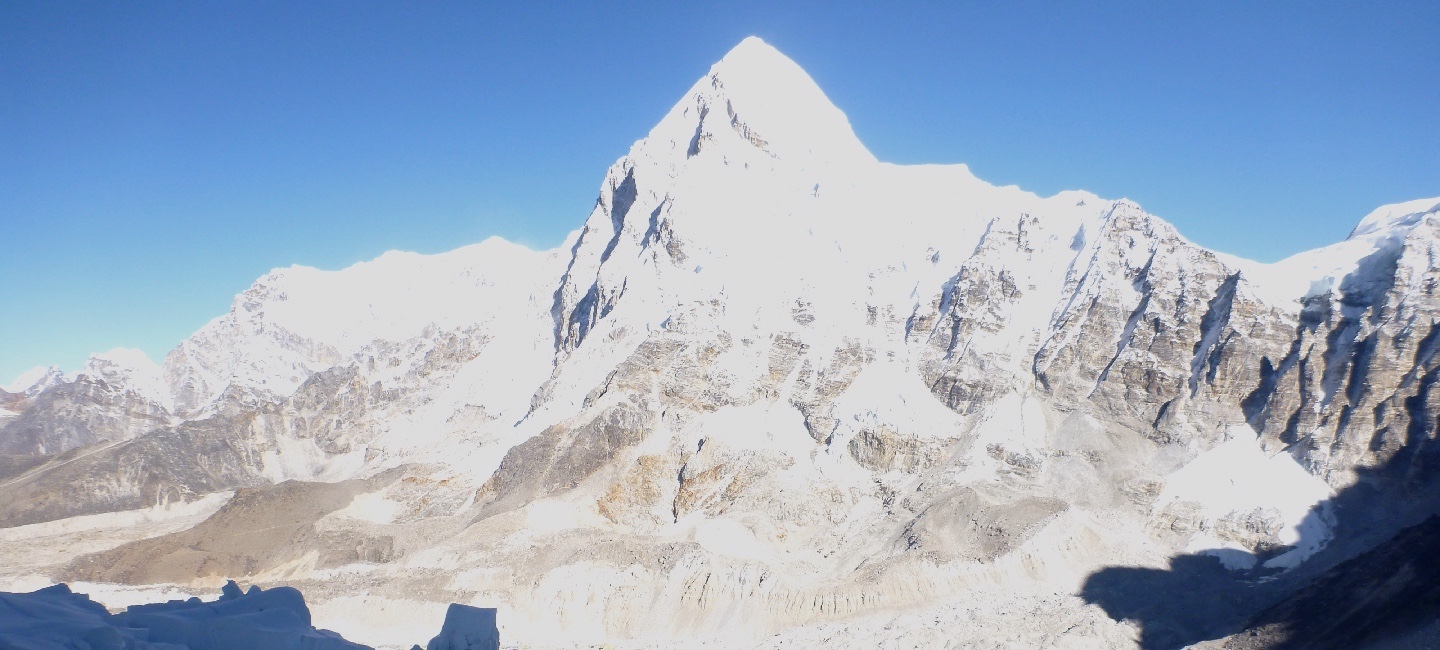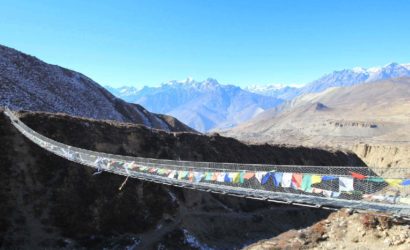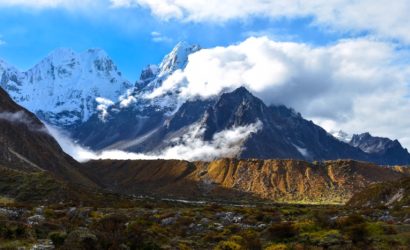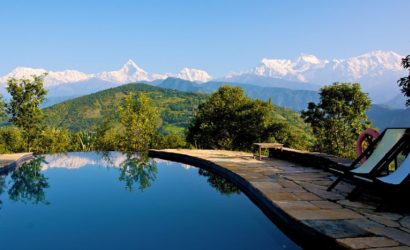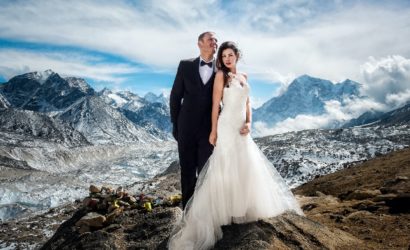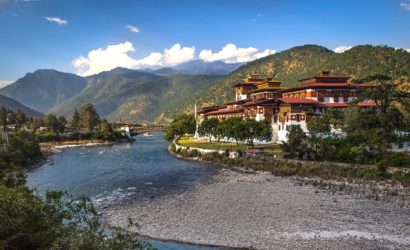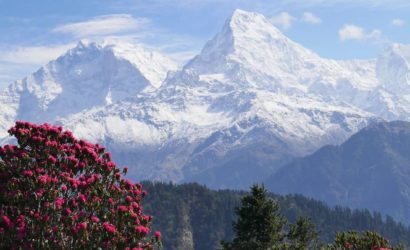Mt. Pumori literally means unmarried Daughter according to Sherpa language, was named by George Mallory, due to her location in the shade of Big E, which lies in Khumbu region on the border between Nepal and Tibet of Nepal.
It was first climbed in 1962 by Gerhard Lenser, member of a German-Swiss expedition. Standing at the altitude of 23494 ft., Pumori is one of the central attractions of Himalayas. Any trekker or the climber who has made a trip to Everest will always remember its distinctive shape.
In general, technically challenging Pumori Expedition is one of the best exercises for climbing Mt. Everest. This might be the dream of the almost climbers to put their feet on the Everest once before they die. Hence, we have used this expedition as a training peak for past Everest teams.
We hope this expedition can really fulfill your dream of reaching on the top of the Everest in your next effort if you trust once. This climb requires solid experience on climbing as well as physical fitness.
You need to be at least in 3 camps after base camp to reach the summit. The base camp is just above Gorekh-shep at the altitude of 5300 meters. After base camp, you can set up first camp at the altitude of 5,650 meters, around the phase of Mount Pumori.
You should set second camp at the ridge after the phase at the altitude of 6,000 meters. The most technical part for this peak is around camp 1 and 2. You should set camp 3 at the altitude of 6,480 meters, around the corner after the ridge.
You can ascend summit from the camp 3 to the top of Pumori. Most of the climbers use this route every year for the expedition to Mt. Pumori to climb.
Experience Required for Pumori Expedition
The Pumori Expedition is not for beginner mountaineers. Climbers must have knowledge of roped snow and ice climbing techniques (to protect from falling down the mountain or into crevasses). It is also required that all members will have an awareness of altitude sickness, frostbite, and the recognition of their symptoms, prevention, and treatment.
Once traveling above advanced base camp, all members must be prepared to be tied into the fixed lines or roped to another team member at all times. Neither solo climbing, nor descending, are allowed above advanced base camp.
Additionally, and perhaps most importantly, members need to join with a spirit of friendship, teamwork and cooperation, and be ready to work with the group and be a good “team-player”.
To participate in this expedition you must be a very fit and active walker-climber in good health. Make sure you have physically trained yourself very thoroughly before joining this climb of Asia’s most famous semi-technical rock-ice-snow climb. Climbers who have already climbed the peaks like Mera Peak; Island Peak can easily be involved in this trip.
Our Pumori Expedition is not “guided” because this is not a realistic proposition in the high-altitude realm of 7,000 meters and above. “Guiding” and being “guided” implies the intimate supervision and care of a “client” by a “guide” who can be responsible for the direct and immediate control of safety.
We believe on Pumori, such a direct duty-of-care, implicit in the traditional guide-client relationship, is not possible.
Upon your arrival in the Kathmandu airport after completing your custom formalities Visa, etc. pick up your luggage and look for our airport representative from Himalaya Discovery, who will display your name on the board at the arrival gate.
You will be greeted by our representative and transferred to the hotel by private tourist vehicle. Overnight in Kathmandu.
Today is free for sightseeing in Kathmandu. You may wish to visit Durbar Square in the heart of the old city where the old Royal Palace, with its intricate woodcarving is located. The whole area is a maze of temples and images. Leading away from the square in all directions are narrow alleys, full of the most amazing variety of shops and stalls.
Some of these landmarks are considered World Heritage Sites including the historic Bhaktapur Durbar Square, the famous ‘Monkey Temple’
Swayambhunath and Buddhists shrine Buddhanath which is one of the largest Stupas in the world.
There will also be a full trip briefing today with gear check. In case you need to hire or buy equipment locally there will be time to do this today. Overnight in Kathmandu.
Formal briefing in the Ministry of Tourism. Today, the expedition leader will also check everyone’s equipment. The last opportunity to buy anything missing, Overnight in Kathmandu.
An early morning start takes us to (TIA) Airport in Kathmandu for the 35 minutes scenic flight to Tenzing and Hillary Airport at Lukla at 2804meters. On arrival at the airport guide will brief you and introduce our porters before we begin our trek towards Phakding.
After landing we have time to discover the village while our staff sort and load our trekking equipment. Then we begin our trek by descending towards the Dudh Kosi River where we join the main trail to Namche Bazaar, located just above Chaurikharka (2713 meters).
The walking is easy and after passing through the small village of Ghat (2550 meters) it is a short walk to Phakding,It is important to take these first few days slowly to enable your body to acclimate and to enjoy the passing scenery and culture. Overnight at guesthouse.
We continue trekking along the banks of the Dudh Kosi, crossing this majestic river many times on exciting suspension bridges laden with prayer flags.
After entering Sagarmatha National Park, the trail climbs steeply with breathtaking views. Namche Bazaar known as the Gateway to Everest which is home to many quality restaurants, hotels, lodges, shops, Money exchange, internet cafe and a bakery.
Namche is one of the biggest villages along the whole Everest trail. Overnight at guesthouse.
We will spend a day here in order to acclimatize and adjust to the thinning of the air. As well as a short trek where a museum is celebrating the traditional customs of the Sherpa people. Today we hike up the Syangboche Airport around Everest View Hotel. From this point, we can see rewarding views of the Himalayas with a stunning sunrise and sunset over the panorama of Khumbu peak. Overnight at guesthouse.
The trek continues along the rushing glacial waters of the Dudh Kosi with magnificent views of the mountains. We trek to an altitude of 3860meters today. On reaching Tengboche you will see the local monastery. Inside the monastery are incredibly ornate wall hangings, a 20-foot sculpture of Buddha, and the musical instruments and robes of the Lamas. The group will be taken to observe a prayer ceremony either in the evening or morning depending on how the days trekking went. Overnight at guesthouse.
From Thyangboche the trail drops to Debuche, crosses another exciting suspension bridge on the Imja Khola, and climbs to Pangboche amongst thousands of mani stones. Our uphill trek continues, taking us to the quaint traditional Sherpa village of Dingboche with its exquisite views of Lhotse, Island Peak, and Ama Dablam. We take our time so we avoid getting affected by the altitude. Overnight at guesthouse.
Today you can enjoy another day for acclimatization. We will have trip to Chhukung valley via the Imja Khola valley to get a marvellous view of the surrounding mountains, especially Lhotse’s massive south wall, then return to Dingboche in the evening. Overnight at guesthouse.
Today, the trail continues along the lateral moraine of the Khumbu Glacier and passes by stone memorials for climbers who have perished on nearby summits.
We continue to climb as we are heading to the altitude of 4910 meters at Lobuche which is really just a few huts at the foot of giant Lobuche peak. Some breathing problems may arise today due to the altitude. Overnight at guesthouse.
After walking about 6 hours we will reach to the Pumori base camp and overnight we will stay in the base camp. We will also make visit to Everest base camp.
You need to have at least 3 camps after base camp to reach the summit. The base camp is just above Gorek Shep at the altitude of 5300meters. After base camp, you can set up first camp at the altitude of 5,650meters, around the phase of Mount Pumori .
You should set second camp at the ridge after the phase at the altitude of 6,000meters. The most technical part for this peak is around camp 1 and 2. You should set camp 3 at the altitude of 6,480meters, around the corner after the ridge.
You can ascend summit from the camp 3 to the top of Pumori. Most of the climbers use this route every year for the expedition to Mt. Pumori to climb.
This day we will climb down to Pheruche and spend a Overnight at Pheruche guesthouse.
From Pheruche we take a slightly different route down to Orsho then to Pangboche village. Here is the oldest monastery in the region which contains what is said to be the scalp and bones of a Yeti, or abominable snowmanthe.
Leaving mountains behind us our descent takes us through Tengboche Monastery at elevation of 3860 meters before continuing back to the town of Namche Bazaar at 3441 meters. We arrive back into Namche Bazaar in the afternoon. Overnight at guesthouse.
Finally we return to Lukla where the trek began, which will seem like a lifetime ago. Enjoying time to reflect on the trek as a group and the personal achievement of all those who took part. Also giving you time to explore the town. Overnight at guesthouse.
Enjoying your last glimpse of the mountains you have recently visited for one last time on the 35 minute Scenic flight back to Kathmandu. On arrival in Kathmandu we are met and transferred back to hotel. Overnight at hotel in Kathmandu.
It’s also spare day in case of bad weather in Lukla. If you get interested to take some gifts from Nepal for friends and relatives, visit to some nearby shops or go out in Thamel for typical Nepalese goods.
In the evening celebrate the expedition and as a farewell party to thank the Sherpas and the team member for their support and friendship during the expedition with the hope of seeing you all again for next expedition! Overnight in Kathmandu.
The trip concludes! Our airport representative will drop you to the airport for your flight departure from Nepal.

